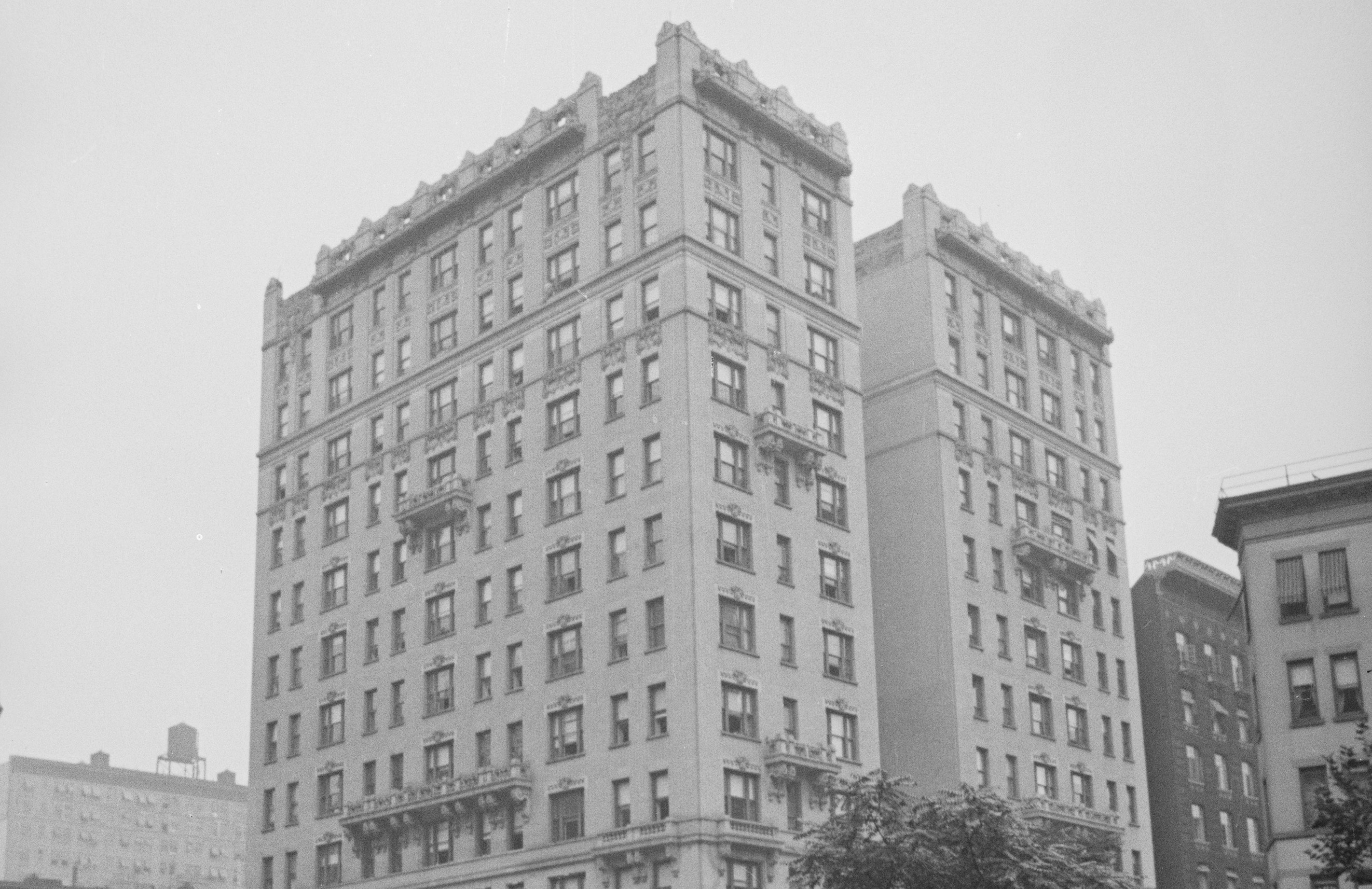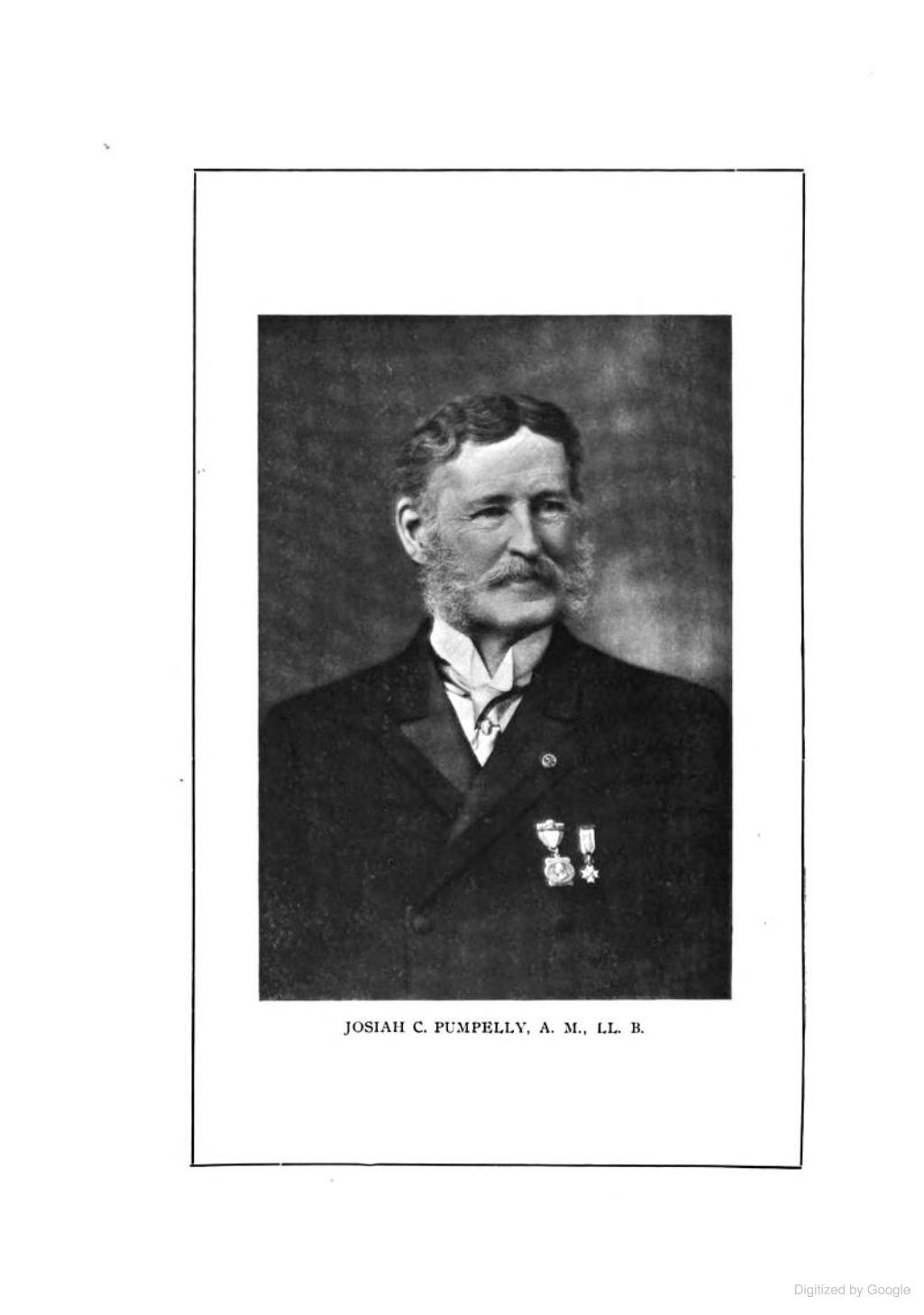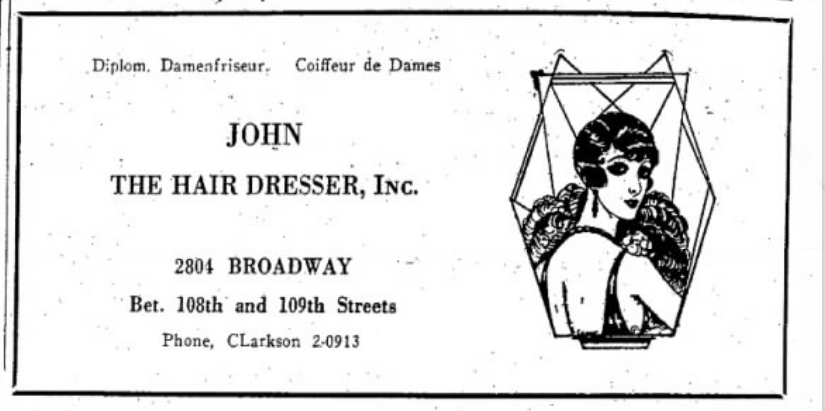
The Manchester
by Tom Miller
On July 10, 1909 the Real Estate Record & Guide reported that William Waldorf Astor had sold eight building lots at the northeast corner of Broadway and 108th Street to Charles E. McManus for $300,000. The article noted that McManus “will erect an apartment house thereon.” Six months later, in January 1910, the architectural firm of Neville & Bagge filed plans for an eight-story apartment building that would cost McManus another $200,000 to erect, bringing the total cost of the project to $15.4 million by 2022 standards.
Faced in Flemish bond yellow brick above a rusticated limestone base, the Manchester was decorated with elements of the waning Beaux Arts style—ornate stone balconies, plaques of frothy carvings, and a pierced parapet. Shops lined the Broadway sidewalk. The apartments ranged from six to eight rooms, each with two bathrooms. Rents topped at about $3,525 per month in today’s money.
Pumpelly could trace his family to Rome circa 420 B.C. and his American roots to Jean Pompillie who arrived in the 18th century.
Among the initial residents were Josiah C. Pumpelly and his second wife Mary Amelia Harmer. Margaret Lanier Winslow, his first wife, had died in 1890 and he and Mary were wed in 1896. Pumpelly could trace his family to Rome circa 420 B.C. and his American roots to Jean Pompillie who arrived in the 18th century. Born in 1839, he graduated from Columbia College Law School in 1863. He was a founder of the Sons of the American Revolution and the Huguenot Society. A historian, he was the author of the 1889 Our French Allies in the Revolution, and Other Addresses; and was the associate editor of The American Magazine.
In the Manchester at the time was the family of Dr. Paul Henry Zagat. He and his wife, the former Anna E Klatzkin, had two children, Ruth Beatrice and Eugene H. Ruth’s engagement to Sydney Ross of Savannah, Georgia was announced in June 1919 and their marriage took place in the Ritz-Carlton that September. The Zagats’ affluence was reflected in their wedding gift to Ruth Beatrice. On September 28 The Sun reported that on the couple’s return from their honeymoon, “they will live at Ninety-eighth street and Riverside Drive in a house which has been built and furnished for them as a wedding gift to the bride by her father.”
At the time of Ruth’s marriage, George C. Stover’s candy store occupied 2808 Broadway. Following his declaration of bankruptcy in 1921, it was offered for rent at the equivalent of $7,500 per month today.
In the early Depression years, Treasures of Paris occupied the store at 2800 Broadway, advertising “Lingerie Made to Order.” In 2804 Broadway was the salon of John the Hair Dresser. The upscale personality of his shop was reflected in his advertisements, offering “Coiffeur de Dames.”
The Great Depression, somewhat surprisingly, had little effect on the Manchester. In 1932 the manager told a reporter that not only was the building 98 percent rented, but there was also a waiting list. (The two percent discrepancy apparently had to do with potential residents waiting for a particular-sized apartment.)
[Daniel A. O’Mara] was the last surviving member of the Old Guard of the City of New York (a veterans’ organization) who had fought in the Civil War.
On February 6, 1934, Daniel A. O’Mara died in his Manchester apartment. The 87-year-old had enlisted as a drummer boy in the 59th New York Volunteers when he was just 14 years old. He was the last surviving member of the Old Guard of the City of New York (a veterans’ organization) who had fought in the Civil War. His funeral was held in his apartment on February 8, followed by a mass at the Church of the Ascension.
Another prominent resident was Robert E. MacAlarney. A writer, editor, professor and screen writer,” he lived here in the early 1940’s with his wife, the former Florence Thedford. He had been a faculty member of the Columbia School of Journalism, a post he retained until his retirement at the age of 70 in 1944. Among his first screen plays was the 1917 Paramount Pictures silent film The Prison Without Walls, which he co-wrote with Beulah Marie Dix.
A renovation completed in 1959 divided some of the sprawling apartments. The stores, of course, continued to see various tenants come and go. In the mid-1960’s 2802 Broadway was home to Richard’s, a clothing store. Today the building is operated as a cooperative, formed in 1982.
Tom Miller is a social historian and blogger at daytoninmanhattan.blogspot.com
Building Database
Keep Exploring
Be a part of history!
Think Local First to support the local businesses at 2800 Broadway aka 255 West 108th Street:
Meet Dr. Sam Marjoria!
Meet Phyllis Jo Kubey!




